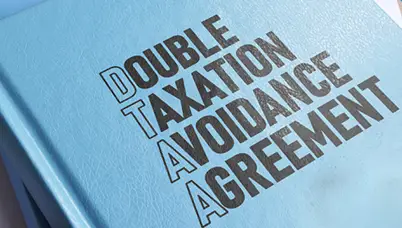Long term pains for Short term gains?
Posted On Tuesday, May 04, 2010
So what do policymakers do every time there’s an economic problem? They simply try to jump start the economy via financial intrusions. And what does this supposedly well-thought of step do? It buys time for the near term at the cost of fiscal clarity in the long run.
And so it is that each time a crisis strikes, lowering the value of currency seems to be the most resorted-to solution. However this only makes it more difficult to get overstretched balance sheets back to normal levels.
Why are we talking about economic crisis? Simply because we happen to be in the midst of one! The crisis that started in 2007 is not over yet. It’s just moved to its next phase - `Sovereign debt crisis`.
There has been a dramatic increase in the public debt levels of many developed economies. And the sadder part is that these levels are all set to continue rising, atleast in the foreseeable future. It’s all quite evident, given the unsustainability of the path pursued by fiscal authorities in many industrial countries.
Chart: Sovereign Debt to GDP in the G-7

Source: IMF Global Financial Stability Report April 2010
For the sake of long-term growth and monetary stability, it is imperative for governments to begin taking drastic measures to check the rapid growth of current and future liabilities.
Debt politics vary with each country - some countries have been pushed onto the path to high debt, while others follow extravagant official spending. On the whole, fiscal deficits have been deteriorating sharply, rising by 20 - 30% points of GDP over just three years. Even more worrying is the fact that most of the projected deficits are structural deficits; which are not because of temporary downturn in the economy but rather are a result of the government making a conscious decision to spend more money than it takes in. So, in the absence of immediate corrective action, assuming that nothing is done about these deficits; we can expect these to persist even during recovery of the economic cycle.
Chart: Average Surplus required to stabilize the public debt / GDP at the 2007 level

Source: Paper on "The Future of Public debt: prospects and implications by Stephen G Cecchetti, M S Mohanty and Fabrizio Zampolli"
One immediate fallout of the failure to address these deficit issues immediately could be an abrupt rise in government bond yields at medium and long maturities. Now, a spurt in such activity could put the nascent economic recovery at a risk, and that would be very unfortunate indeed. This could also see central bankers struggling to control inflation pressures, which might ultimately threaten present monetary policy arrangements.
But governments are simply not ready to take that step at this moment. They believe that any withdrawal could risk the recovery, which is actually driven by stimulus measures.
Adding to the gloom, the current expansionary fiscal policy has coincided with the rising of largely age-related spending, like pension and health care costs. The long term fiscal imbalance and the present value of unfunded liabilities arising from ageing is very large. For the United States the estimate is around 6.9%. According to the data provided by the US Congressional Budget Office (CBO 2009), the United States would need a permanent improvement of 2.6% of GDP (as per 2009) in its budget balance over the next 50 years to stabilize the Federal Debt/GDP ratio.
This vicious circle of ever-increasing debt and resultant monetary debasement is in need of Draconian measures to stop. We might be searching in vain, but still, we need strong political will to solve the long-run imbalance. Governments need to be forced on to the path of fiscal austerity and rectitude, else the instability of government finances are bound to explode in to a funding crisis. We’ve had recent examples of Dubai and Greece; but these are just glimpses of a long emergency that could lie ahead.
Tragically, history seems to suggest that negative consequences of previous attempts will continue to encourage governments to keep trying monetary interventions. In such highly explosive times, only one stable keeper of value remains - Gold.
Unless policymakers are forced to move towards a more rational and long-term approach i.e going through short term pains for longer term gains; gold will likely keep gaining in value, and hence seems to be an investor’s safest bet.
Click here to invest in the Quantum Gold Fund ETF
Disclaimer:
The views expressed in this article are the personal views of the Fund Manager of Quantum Gold Fund. The views constitute only the opinions and do not constitute any guidelines or recommendation on any course of action to be followed by the reader. This information is meant for general reading purpose only and is not meant to serve as a professional guide/investment advice for the readers. This article has been prepared on the basis of publicly available information, internally developed data and other sources believed to be reliable. Readers are advised to seek independent professional advice and arrive at an informed investment decision before making any investments. Please visit – www.quantumamc.com/disclaimer to read scheme specific risk factors.
Related Posts
-

Navigating NRI Investments : Understanding Double Taxation Avoidance Agreement (DTAA)
Posted On Friday, May 09, 2025
A recent ruling by the Income Tax Appellate Tribunal (ITAT), Mumbai around capital gains arising out of redemption of mutual fund units by NRI investors are not taxable in India
Read More -

Debt Monthly View for April 2025
Posted On Wednesday, May 07, 2025
In April 2025, the Reserve Bank of India...
Read More -

Equity Monthly View for April 2025
Posted On Wednesday, May 07, 2025
April 2025 witnessed a reversal in FPI flows and an ease of global tariff related uncertainties, leading to a rise in broader indices.
Read More



